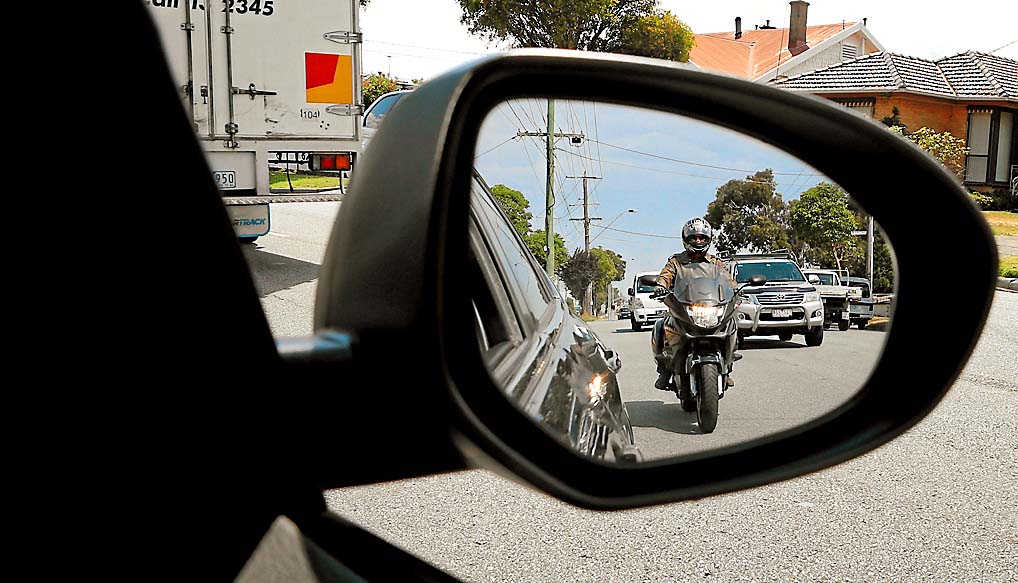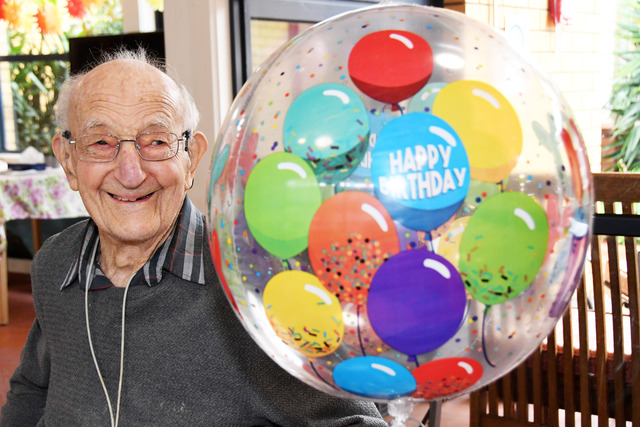By TARA McGRATH
IT happens in an instant. You are sitting in your car, tapping the wheel and filling time.
A glimpse of something draws your gaze to your rear-view mirror — a looming headlight or a garish helmet. And while you’re still wondering how late you are running for work, between the lanes of traffic comes a motorcycle swaying by your side mirrors to finish at the front of the traffic queue.
How does a driver see that rider: as selfish, endangering lives or simply impatient? Or is it the case that lane filtering — as it is known — helps ease congestion and keeps motorcyclists safe?
That’s one of the major questions posed in a state government report on motorcycle safety released late last year.
“Motorists are fed a diet of bull, that motorcyclists are dangerous, anything they do is dangerous — but they’re unaware of the evidence that says filtering is safe,” says Rob Smith, from Motorcycling Australia, the governing body of motorcycle sport in the country. “Safety is at the heart of this.”
Long-time motorcyclist Doug Sunderland told the parliamentary inquiry that driver attitudes put him at risk every time he took to the road.
“Seventy-three years of riding and the moment I get on that road everyone of you people in a car, bus or truck is out to kill me. That is the attitude I take. There is not a vehicle on the road that is not trying to kill me and that is how I have survived for 73 years,” he said.
In its report, the committee chastised road safety agencies for failing to try to improve driver attitudes towards riders despite previous recommendations.
The committee’s head, Sandringham MP Murray Thompson, believes its work is a corrective that will make motorcycling safer for all and foster understanding among different road users, whether they be on two wheels or four.
Of the 64 recommendations the most contentious was a “filtering trial” that would be followed by an evaluation.
Lane filtering is defined as moving between lanes of congested traffic that is stationary or moving only very slowly. It is a common, yet illegal, practice.
The proposed trial has won praise from the motorcycling community, although none of the recommendations in the report are yet to be acted on by the state government. It has six months to respond.
Motorcycling Australia’s Mr Smith said the report was nonetheless a good start. “We’re obviously very pleased with the report because it indicates a lot of thought has been given to motorcycle safety — beyond the traditional approach. They’ve thought outside the box on a lot of issues.”
Mr Smith said there was no law against filtering, but a variety of other regulations prohibited the practice.
“Most of the filtering takes place between stationary vehicles, and if they stay where they are there’s no reason for it to be dangerous.” He believes filtering should be allowed only up to a maximum speed of 30 km/h.
The VACC — Victoria’s peak automotive body — agrees that a filtering trial will have a significant impact on Victoria’s roads.
VACC executive director David Purchase says it will enable riders to be ahead of traffic flows and removed from the traffic mix. “But in order for motorists to appreciate the benefits of filtering, a trial must be accompanied by an education program.”
He said filtering had to be distinguished from lane-splitting, which is riding on the lines that separate lanes in moving traffic. Many motorists did not understand the difference.
The New South Wales government recently approved a filtering trial in parts of Sydney’s CBD that will begin next month.
NSW Roads Minister Duncan Gay said lane filtering was against the law, but in part of the CBD there would be an exemption for motorcyclists that would permit them to filter through traffic when vehicles were stopped at traffic lights.
But there are restrictions such as taking care when filtering near buses and no filtering on the left. Lane splitting remains illegal.
For the trial to work, Mr Smith highlighted the need for the public’s perception of lane filtering to change.
“It needs to demonstrate that filtering is not unsafe, it can help motorists and they will benefit.”
The inquiry’s chairman Mr Thompson insisted a filtering trial would not be a “licence for road chaos”.
There was already a high level of filtering happening — illegally — on the road, he said, and the aim of a trial would be to improve safety for motorcyclists and drivers.
Perhaps surprisingly, the RACV — a representative body primarily for drivers — would support any investigations into legalising the practice, said its roads and traffic manager Dave Jones.
In the US, a report from Oregon’s department of transport into lane-sharing noted the practice could be dangerous because motorcycles moved into spaces not designed for much traffic and where movement is not expected. Questions were also raised about the increased dangers of filtering for novice riders.
Filtering on Victorian roads, while divisive for road users, is not the only recommendation in the parliamentary report that has raised eyebrows.
The proposed abolition of a $60 safety levy for motorcyclists has also buoyed the motorcycle crowd after years of what they say is an unfair burden. Victoria is the only state to charge the levy. Mr Thompson said the levy placed a disproportionate burden on motorcyclists.
“Most accidents with motorcyclists also involve a motor vehicle — the levy wasn’t placed upon other road users.”
Two wheels and a prayer
There has always been a divide between motorcyclists and drivers — who exactly rules the road? TARA McGRATH looks at how a recent state government report hopes to unify the two road users.
Honda Australia rider training manager Mark Collins was an outspoken critic of the levy at the inquiry.
“I question the value of a rider levy being spent on road fixes and I question the benefits that have been reported to date on how effective those fixes have been. If you measure something six months after you have fixed it, of course there is a honeymoon period and you will have a great effect,” he said.
He added that the fixes should be measured continually to assess their effectiveness. Others pointed out that no other road user group had been forced to improve the infrastructure network through a safety levy.
“Road treatments that benefit all road users equally should be funded by all road users equally,” the Victorian Motorcycle Council submission said.
That question of where the levy money is spent stems back to another issue Mr Smith was glad to see addressed in the inquiry’s report — the lack of data collated about motorcycling.
“Clearly a lot of data is incomplete, poorly collected and incorrectly interpreted.”
Mr Smith said collecting accurate data was the number one priority for him because it would set the agenda for the next 10 years.
However, he remains hopeful for the future of motorcyclists after such a comprehensive report. “Safety is improving — there’s no better time to a be motorcyclist.” He is hoping drivers will soon recognise that as well.
What do you think? Post a comment below.
For all the latest breaking news, stay with this website. Also, follow the Weekly at facebook.com/dandenongjournal or on Twitter @DandyJournal.







